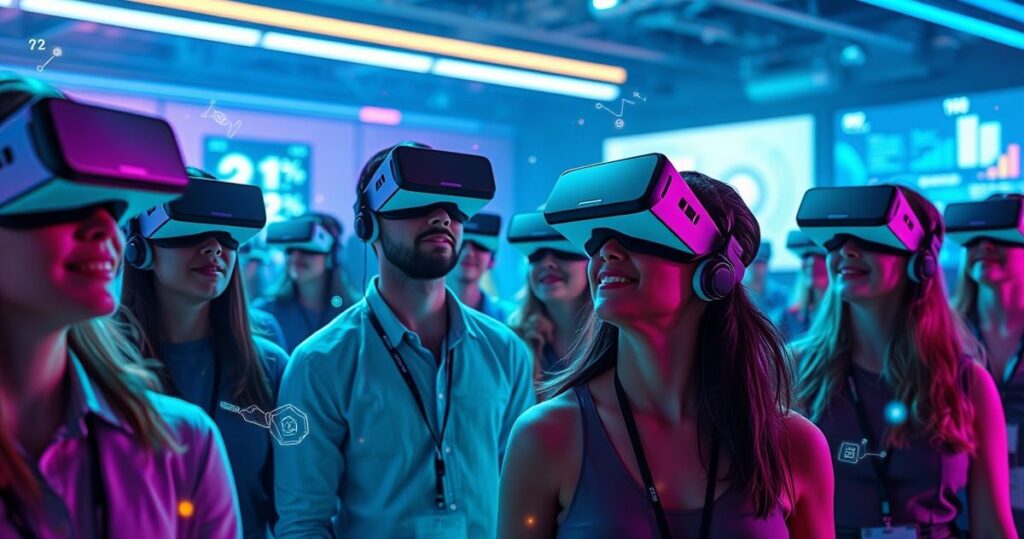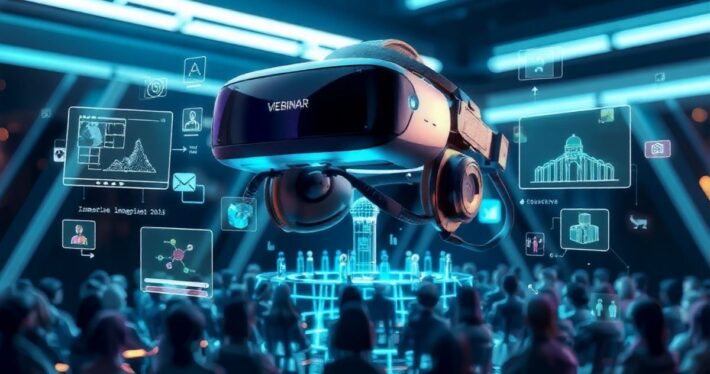The future of virtual reality and AI integration in webinars.

The Future of Virtual Reality and AI Integration in Webinars
Imagine hosting a webinar where attendees don’t just watch a screen but step into a fully immersive virtual environment. Sounds like science fiction? Not anymore. The integration of virtual reality (VR) and artificial intelligence (AI) is rapidly transforming the webinar landscape, creating experiences that are more engaging, interactive, and personalized than ever before. As businesses and marketers seek new ways to capture attention and drive conversions, VR and AI are emerging as game-changers. This article explores the future of these technologies, their impact on webinars, and what you can do to stay ahead of the curve.
Why VR and AI Are the Perfect Pair for Webinars
Let’s be honest: Traditional webinars can feel flat. Static slides, passive audiences, and one-way communication often lead to low engagement and missed opportunities. That’s where VR and AI come in. VR creates immersive environments that transport attendees into a 3D world, making them feel like active participants rather than passive viewers. AI, on the other hand, enhances the experience by personalizing content, automating tasks, and providing real-time insights. Together, these technologies are redefining what’s possible in the webinar space.
How VR is Revolutionizing Webinars
Virtual reality is no longer just for gaming—it’s making waves in the webinar world. Here’s how:
- Immersive Environments: Instead of staring at a screen, attendees can step into a virtual auditorium, product demo room, or even a simulated real-world scenario. For example, a tech company might use VR to showcase a new gadget in a 3D environment, allowing attendees to interact with it in real time.
- Enhanced Engagement: VR encourages active participation. Attendees can move around, interact with objects, and even network with others in the virtual space. This level of engagement is far beyond what traditional webinars offer.
- Real-World Applications: Imagine a real estate agent hosting a VR webinar to showcase properties. Attendees can virtually walk through homes as if they were there in person. Or consider a fitness coach offering a VR workout session where participants feel like they’re in the same room.
The Role of AI in Webinar Personalization and Automation
While VR creates the environment, AI brings the smarts. Here’s how AI is enhancing webinars:
- Personalized Content: AI can analyze attendee data to tailor presentations, recommend relevant resources, and even customize the virtual environment. For example, an AI-powered webinar platform might adjust the agenda based on participant interests.
- Real-Time Insights: During the webinar, AI can monitor engagement levels, track attendance, and provide actionable insights to the host. This allows for on-the-fly adjustments to improve the experience.
- Automated Tasks: From sending reminders to managing Q&A sessions, AI can handle repetitive tasks, freeing up hosts to focus on delivering a great presentation.
A Real-World Example: VR and AI in Action
One company leading the charge is NVIDIA, which has used VR and AI to create compelling webinar experiences. In a recent product launch, attendees entered a virtual space where they could explore new GPUs in 3D, interact with AI-powered chatbots for technical details, and even test the product’s capabilities in real time. The result? Record-breaking attendance and a 40% increase in post-webinar conversions.
Challenges and How to Overcome Them
Of course, integrating VR and AI into webinars isn’t without its challenges. High costs, technical complexities, and the need for specialized equipment can be barriers. But here’s the good news: As the technology evolves, these challenges are becoming more manageable. For instance, browser-based VR solutions are eliminating the need for expensive headsets, and AI tools are becoming more user-friendly.
The Future of Webinars: What to Expect
So, what’s next for VR and AI in webinars? Here are a few trends to watch:
- Hybrid Events: Combining VR with live video to create hybrid experiences that blend the best of both worlds.
- AI-Driven Avatars: Virtual hosts powered by AI to deliver presentations and interact with attendees.
- Gamification: Using VR to gamify webinars, making them more engaging and fun.
- Accessibility Improvements: Advances in VR and AI that make immersive experiences accessible to a broader audience.
How to Prepare for the Future
Ready to embrace the future of webinars? Start by exploring VR and AI tools that align with your goals. Test browser-based VR platforms, experiment with AI-powered webinar software, and stay updated on industry trends. Remember, the key is to focus on creating experiences that are both immersive and valuable for your audience.
Final Thoughts
The integration of VR and AI is set to revolutionize webinars, turning them into dynamic, engaging, and highly personalized events. While the technology is still evolving, the potential is undeniable. By staying ahead of the curve and experimenting with these tools, you’ll be well-positioned to create webinars that not only capture attention but also drive meaningful results.


